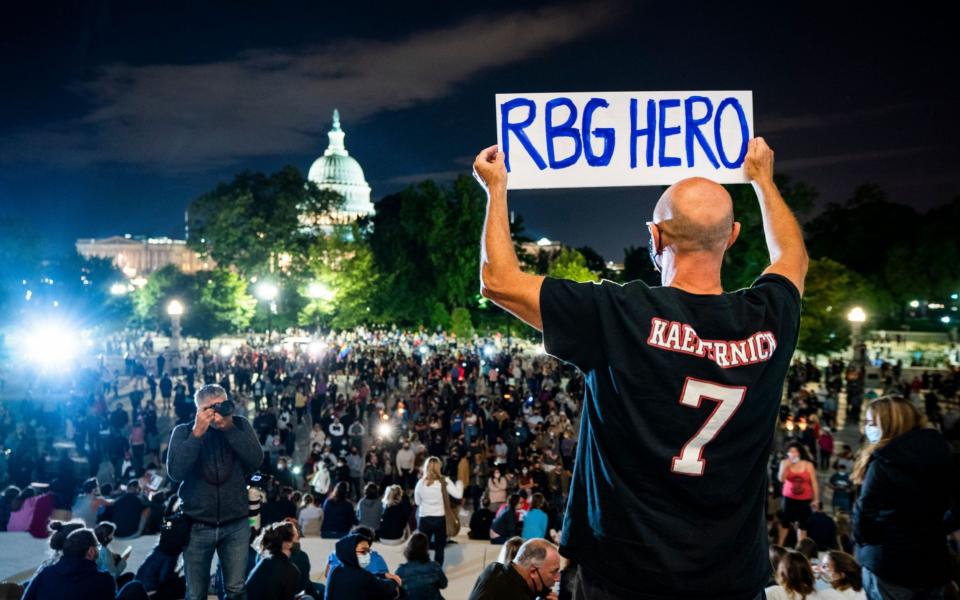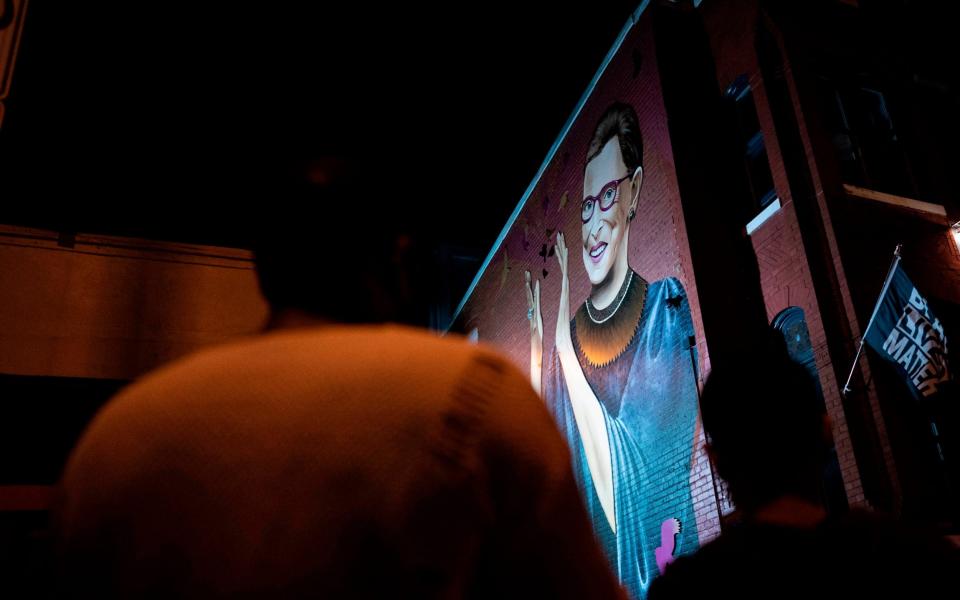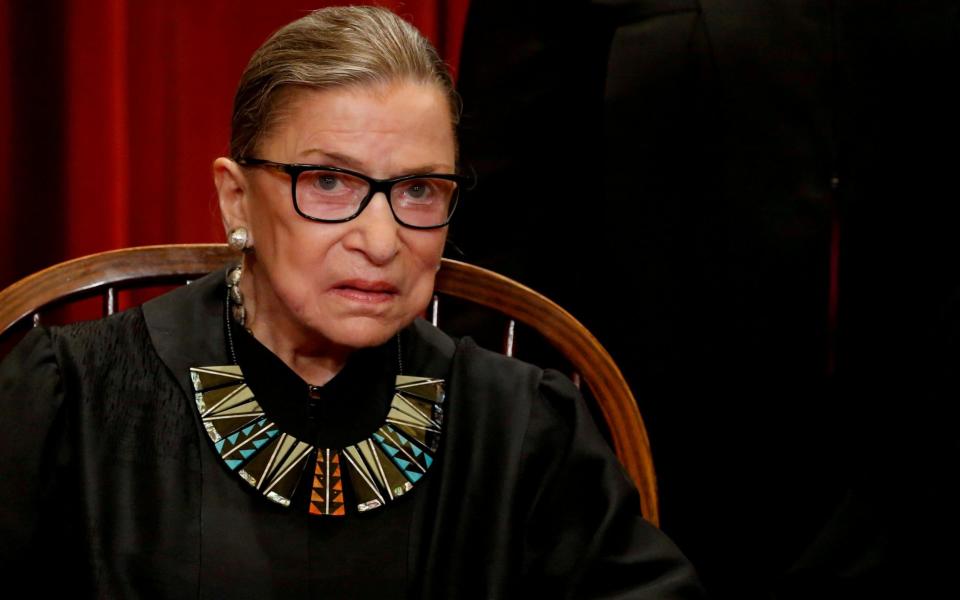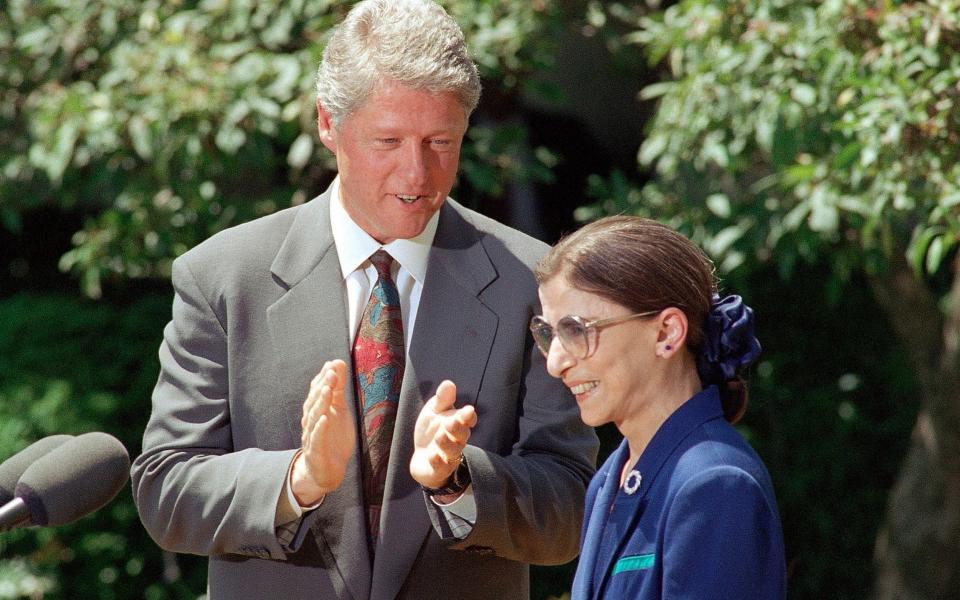Americans mourn 'titan of the law' Ruth Bader Ginsburg

Late in the evening over 1,000 people packed the iconic steps of the US Supreme Court, laying flowers, lighting candles, some weeping as they mourned the death of Ruth Bader Ginsburg.
They sang "Amazing Grace," held signs saying "Thankyou for showing how to be an American," and chanted "Honour her wish" - that she not be replaced until after the election. One picture depicted her as a saint.
It was a spontaneous outpouring of emotion more akin to the death of a celebrity than a judge. But Justice Ginsburg was more than a brilliant legal mind. She had become a beloved heroine, and touchstone, for liberals across the United States, including many who were not born when she was elevated to the highest court in 1993.
Justice Ginsburg, who died of metastatic pancreatic cancer, aged 87, had become the court's senior liberal voice, writing fiery opinions on a wide array of issues including gender inequality and capital punishment.

The Duchess of Sussex was among those who paid tribute, describing the justice as someone who had inspired her since childhood, and urging people to "act for her," an apparent reference to the election.
In a statement the duchess said: "With an incomparable and indelible legacy, Ruth Bader Ginsburg will forever be known as a woman of brilliance, a justice of courage, and a human of deep conviction.
"She has been a true inspiration to me since I was a girl. Honour her, remember her, act for her."
Late in life Justice Ginsburg became a cultural and social media icon, with the nickname "Notorious RBG". She embraced it, saying: "In the word the current generation uses, it's awesome."
She was born into a working class family in Brooklyn, New York, and overcame hostility toward women in the male-dominated legal world. She once said: "I struck out on three grounds: I was Jewish, a woman and a mother."
In the 1970s, she rose to prominence winning five of six gender discrimination cases she argued as a lawyer before the Supreme Court.

Bill Clinton nominated her to sit on the Supreme Court in 1993 and she became the second woman to do so.
Some of her recent work included the 2015 ruling legalising same-sex marriage nationwide, deciding on race as a factor in university admissions, and striking down abortion restrictions in Louisiana and Texas.
During the 2016 election campaign she publicly called Donald Trump a "faker" and later backed the #MeToo movement.
Justice Ginsburg was diagnosed with cancer four times in her later years but worked on.
According to her biographer she had been "holding on for dear life" in the hope of a Joe Biden victory in November, meaning she would be replaced with a fellow liberal.

She had faced pressure to retire under Barack Obama, but was apparently certain Hillary Clinton would win in 2016. She wanted to give way to a nominee selected by the first woman president.
Mr Trump paid tribute to his fellow New Yorker, calling her a "titan of the law," and a "fighter to the end," who "inspired all Americans". He added: "May her memory be a great and magnificent blessing to the world."
He ordered US flags to be flown at half-staff at the White House, and all government buildings, military bases, and embassies around the world.
Mr Obama said: "She was a warrior for gender equality. Justice Ginsburg inspired the generations who followed her. Michelle and I admired her greatly."
Outside the Supreme Court there was a harbinger of the divisiveness to come in the election campaign when an anti-abortion activist began chanting "Roe v. Wade is dead," through a megaphone. The crowd drowned him out with chants of "RBG".

